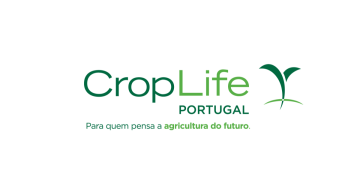The two scientists generated hundreds of virtual Earths with one of Europe’s most powerful supercomputers. They populated each with over 33,000 vertebrate species organized in thousands of food webs. They simulated future changes in climate and land-use to observe species’ responses at monthly intervals between 2020 and 2100.
The virtual species could disperse and adapt to new environmental conditions, which often resulted in biological invasions. The food webs also adapted to extinction of local species, as well as to the arrival of invasive species. This powerful and ecologically realistic model provided the scientists with a unique tool to simulate the future of terrestrial vertebrate diversity while exploring the role of ecological interactions in extinction processes.
The simulations predict a dramatic end-of-century loss of diversity. Depending on the climate change scenario, by 2050 local ecosystems will have lost on average between 6% and 10.8% of their vertebrate species. By 2100, this increases to a 13-27% average diversity loss.
In their paper, Giovanni Strona and Corey Bradshaw also observed a faster decrease in diversity between 2020 and 2050 than after. This suggests that the next few decades will be decisive for the future of global biodiversity.
Extinction cascade
A key strength of the study is its ability to measure the contribution of ecological interactions to the extinction toll. The model simulated how “primary” extinctions triggered directly by climate and land-use change led to additional extinctions. In the worst cases, the extinction of a few key species could collapse entire vertebrate communities.
The results from the simulations demonstrate that this chain-reaction effect can amplify biodiversity loss by up to 184%. This shows how failing to account for ecological interactions can lead to a severe underestimation of the ongoing biodiversity crisis.
When species go extinct, their extinction also weakens local ecosystems by reducing the number of connections in food webs between species. In the worst-case scenario, by 2100 on average close to half of the connections disappeared in the local food webs due to extinctions.
Larger species, that are higher up in the food chain, resulted particularly vulnerable to secondary effects following extinctions caused by climate and land use change. In fact, the model predicts that the average and maximum size of vertebrate species will progressively decline in future vertebrate communities.
Making up for the lack of data
Ecosystems are highly complex. Gathering detailed data on interactions between species in food webs is challenging even for small areas, such as a pond. Obtaining detailed data for the whole biosphere lies beyond the possibilities of today’s science.
Modelling offers a viable solution. By using available information on real-world species from many, heterogeneous datasets, the authors distilled the “ecological essence” of vertebrate species and, with that, they generated global-scale models of terrestrial communities populated by interacting virtual species. These simulated Earths permitted scientists to explore extinction mechanisms at an unprecedented scale and resolution.
COP15: moment of truth for global biodiversity
Meanwhile, at the COP15 global biodiversity conference in Canada, 196 countries including the EU are negotiating an ambitious global biodiversity agreement to halt and reverse biodiversity loss. The agreement will define the fate of the 1 million species that are currently at risk of extinction, many of them already within the next decades.
Biodiversity protection is not just about counting species. Half of the world’s economic output depends on nature. Healthy biodiversity means healthy people, food security, and water availability. Nature is our best ally in tackling the climate crisis, as healthy ecosystems can protect us from risks like flooding or extreme drought, and they absorb more carbon.
The European Union is therefore negotiating measurable goals and targets to
- protect at least 30% of land and oceans by 2030
- restore 3 billion hectares of land and ocean
- halt species extinctions caused by humans
- address unsustainable agriculture, forestry and fisheries
- tackle drivers of biodiversity loss such as pesticides, invasive alien species, and plastics
More information
Read the study in Science Advances: http://www.science.org/doi/10.1126/sciadv.abn4345
More news on COP15: EU at COP15 global biodiversity conference (europa.eu)
What’s the EU doing to protect and restore biodiversity: Biodiversity strategy for 2030 (europa.eu)
O artigo foi publicado originalmente em JRC.


















































